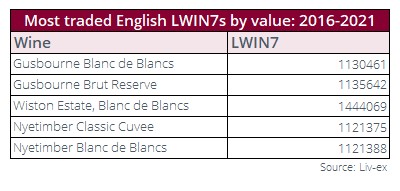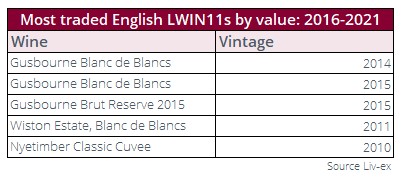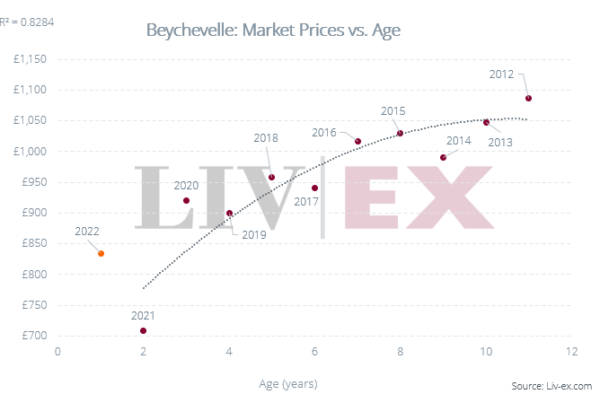- The first English wine was traded on Liv-ex in 2016.
- Gusbourne leads trade in English wine at present.
- This March the first still Pinot Noir was traded.
Since the first English wine traded in 2016, there has been a slow but steady rise in the number of Kent and Sussex-born wines rubbing shoulders with grand Bordeaux and Burgundian domains in the secondary market.
As 19th to 27th June is English Wine Week, we decided to take a quick look at this small corner of the Exchange and how it has developed over the last five years.
In the beginning
 The first English wine to trade on the secondary market was Nyetimber’s Classic Cuvee, in the summer of 2016.
The first English wine to trade on the secondary market was Nyetimber’s Classic Cuvee, in the summer of 2016.
It was not until 2018 that the same wine traded again. In 2019 both Nyetimber and Gusbourne’s Blanc de Blancs were traded.
In 2020, the combination of global lockdowns and a broadening market saw the number of English wines traded increase to five.
And this trade is increasing. So far this year, eight distinct English wines (LWIN7s) have been traded in the secondary market.
Limited Market
The current market for English wine is, clearly, very limited. Although larger than some other global wine regions, even European ones, its trade levels pale in comparison to even a region such as Beaujolais.
Champagne’s secondary market has seen 237 LWIN7s trade so far this year and it is some 760 times larger in terms of value than English wine.
English wine is not poised to up-end the hierarchy of the “classic” fine wine secondary market anytime soon.
A look into the future
 Until March of this year, all trade in English wine had been for white, sparkling wine. The blanc de blancs wines of Gusbourne, Wiston and Nyetimber have cornered much of the secondary market for English wine (as it currently stands).
Until March of this year, all trade in English wine had been for white, sparkling wine. The blanc de blancs wines of Gusbourne, Wiston and Nyetimber have cornered much of the secondary market for English wine (as it currently stands).
This March, however, the first still English wine was traded; Gusbourne’s Pinot Noir. While it is entirely likely that the majority of English trade in future will remain fixed on sparkling wines, as the industry develops so the scope for trading diversity will also grow.
For now, growth in English wine trade is principally focused on the on- and off-trades. Retailers are reporting a “boom” in sales of English wines, up 99% to 200%.
Much of this is from a small base but as English wine increasingly finds its feet (and grows its reputation) in both domestic and export markets, so its secondary market will steadily rise as well.





